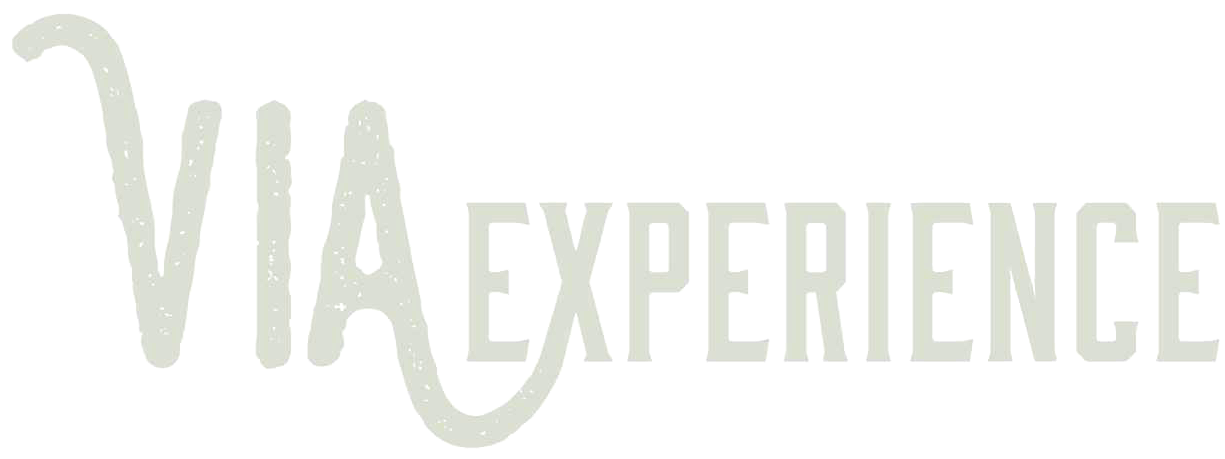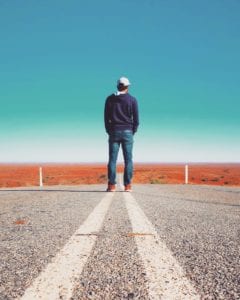Peru's Sacred Valley
Peru Travel Itinerary & Guide
Guest Post From:
1 Week in Cusco, Peru
Of course, the major attraction around here is the Machu Picchu. However, Sacred Valley hosts numerous other marvels worth visiting, that make a one week stay around nearly not enough. Check it out !
Day 1:
Time to get used to the altitude. Visit of Cusco’s historical center, market, artisanal shops. Walk uphill to the Cristo Blanco and Sacsayhuamán ruins for a beautiful sunset over the valley
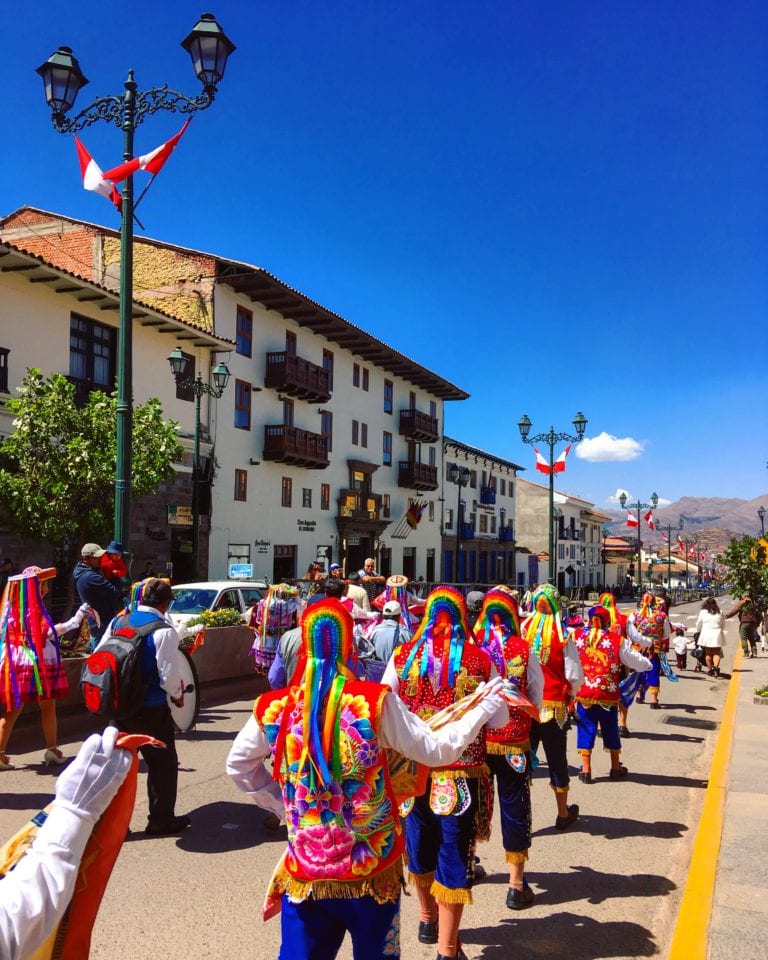
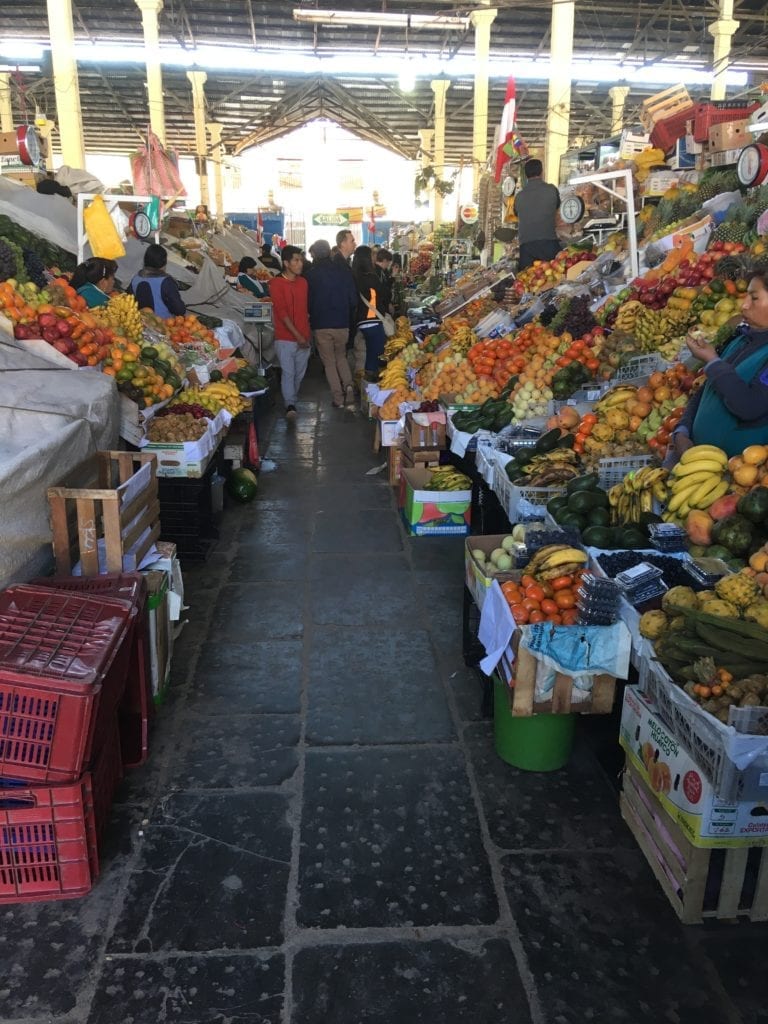
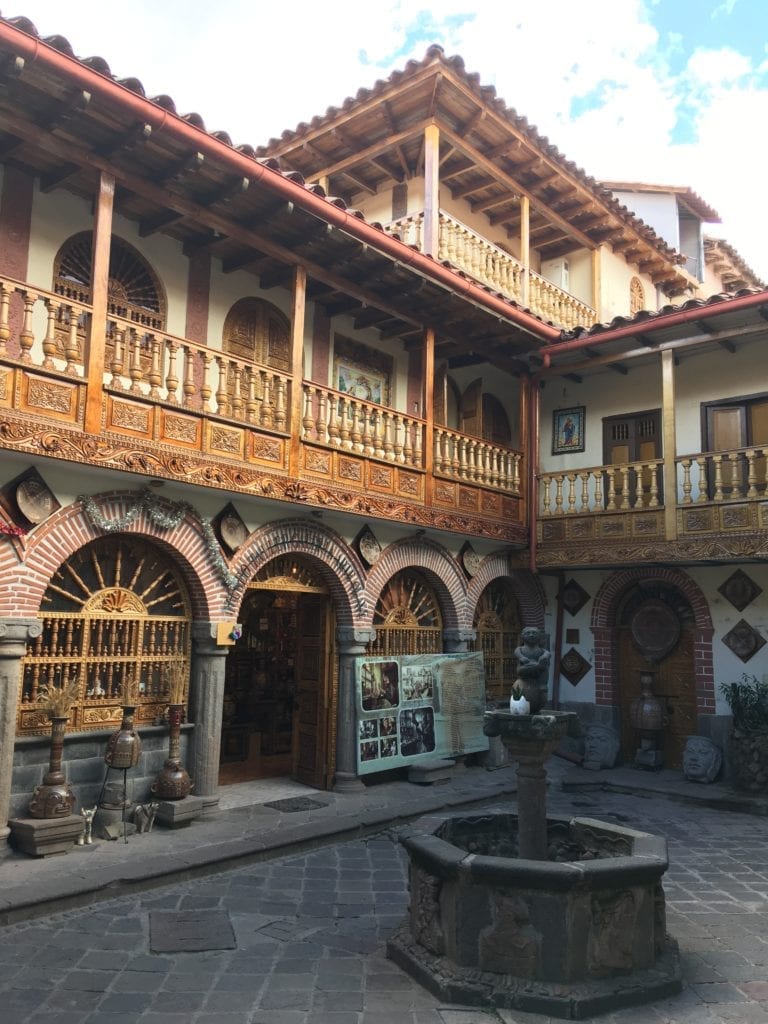
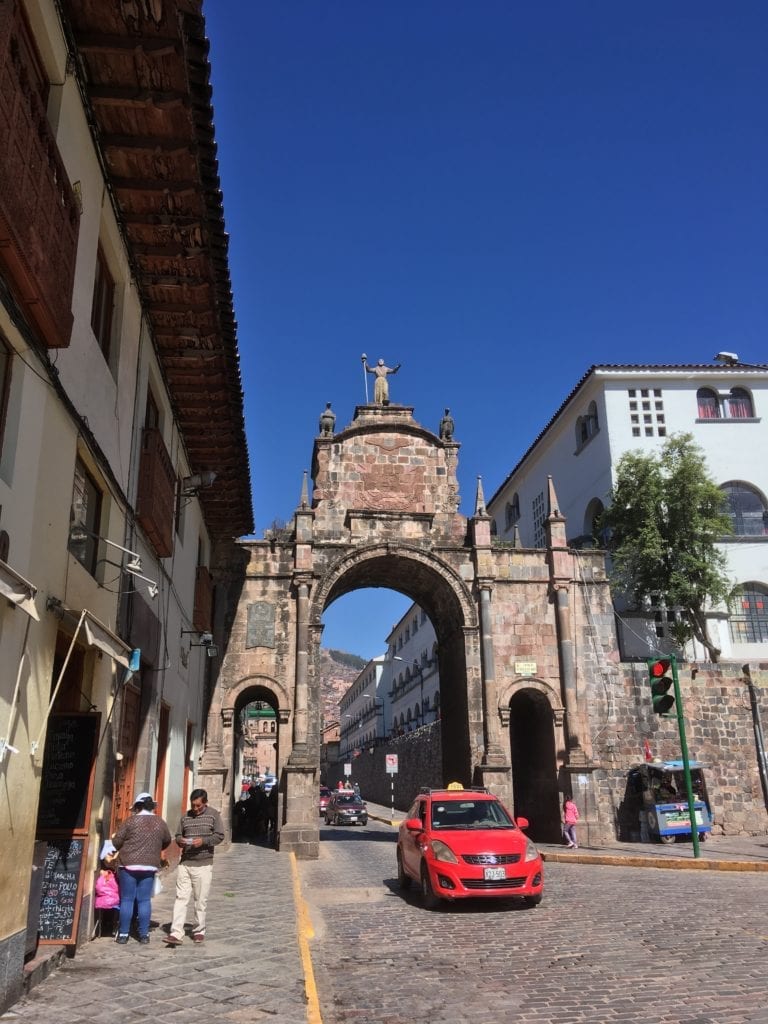

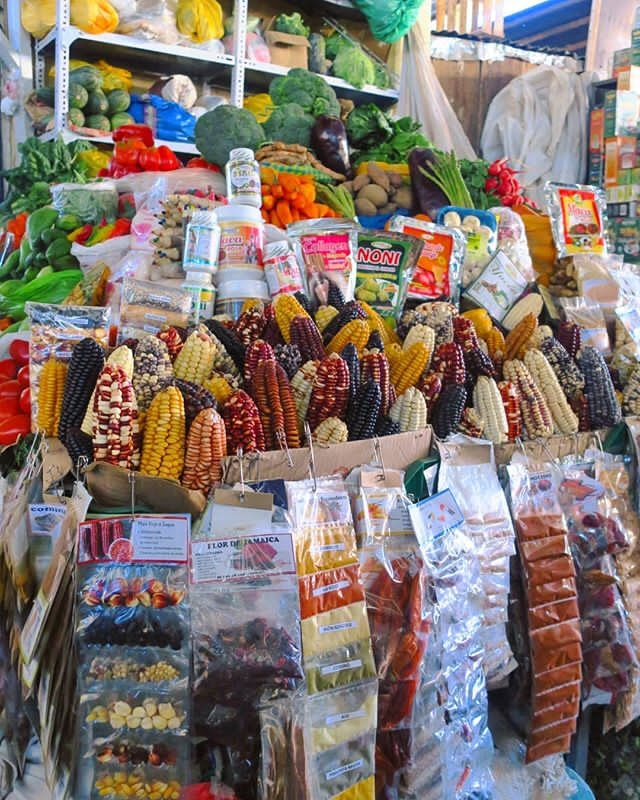
Exploring Cusco
Cusco’s “centro historico” is a history Disneyland. Like we always do in a new city, we strolled around to discover its marvels. In every street, travel agencies and souvenir shops pack into the courtyards of old Spanish mansions. On every plaza, perfectly conserved religious buildings. I won’t detail here everything to see, any hotel will give you a map with the unmissable. My advice : enter anywhere you can, lot of courtyards are amazing (often hotel halls, but get in there, they won’t mind).
For lunch, you can find plenty of local options a few blocks south the hypertouristic center, where the food is overpriced. Check where the locals are, you will find good “almuerzos” for less than 10 soles (~3$)
Don’t miss San Pedro Mercado (market), it’s a wise mix of local fresh products you can try out and souvenirs.
Climb to Saqsayhuamán
Important : Saqsayhuamán (pronounce “Sexy Woman”) is part of the sites included in the “Boleto Turistico” (120S) that you have to buy in order to visit most sites around.
In order to access the site, you can either grab a taxi (but you are not that lazy, are you?), or enjoy a pleasant but breathtaking climb uphill that will make you discover a side more authentic of Cusco’s narrow streets and pass by the Cristo Blanco where the views over the valley are unparalleled.
Saqsayhuamán ruins are not the most impressive around but will give you a short introduction on Incas. If interested in what’s behind those big old rocks, find a local guide outside or download one offline in advance, written information are scarce on the spot.
Bonus: the sunset colors make it even better


Day 2:
Day trip to Pisac, an important archeological Inca site doubled with a cute tiny village. Back in Cusco in the late afternoon for a Peruvian cooking lesson
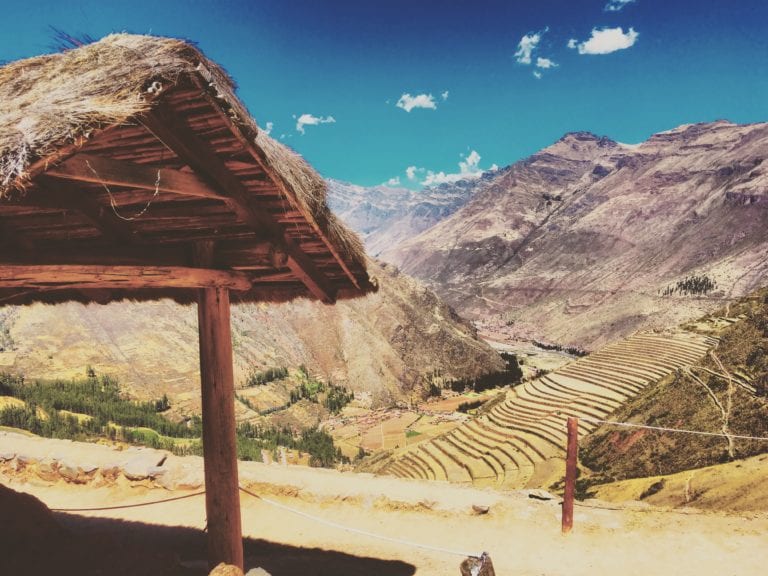
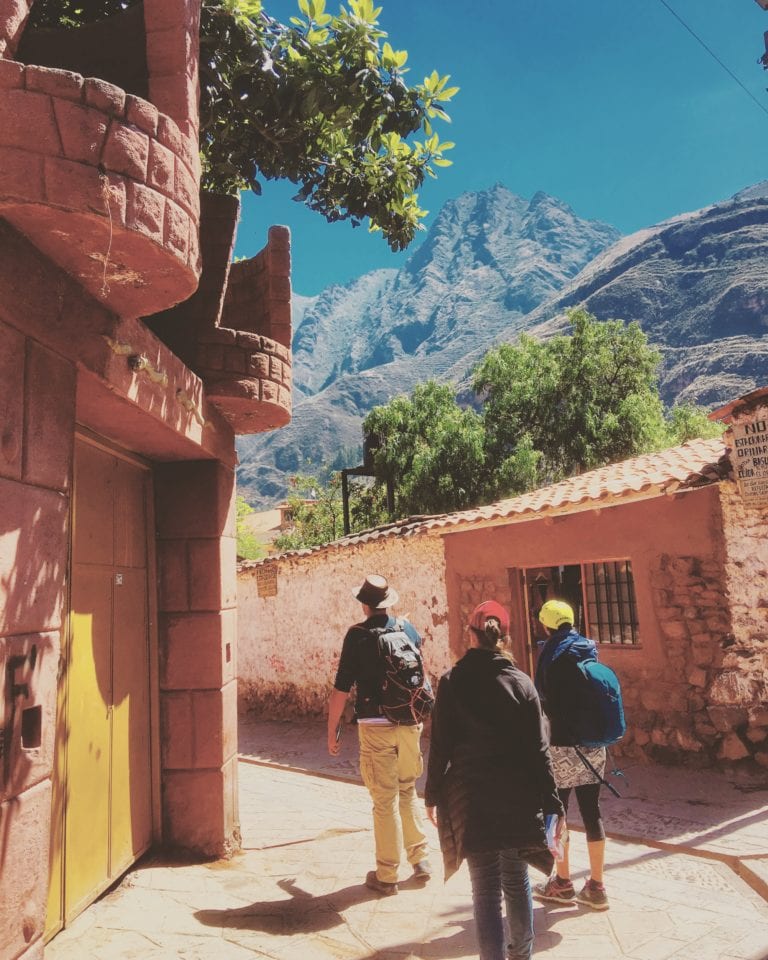
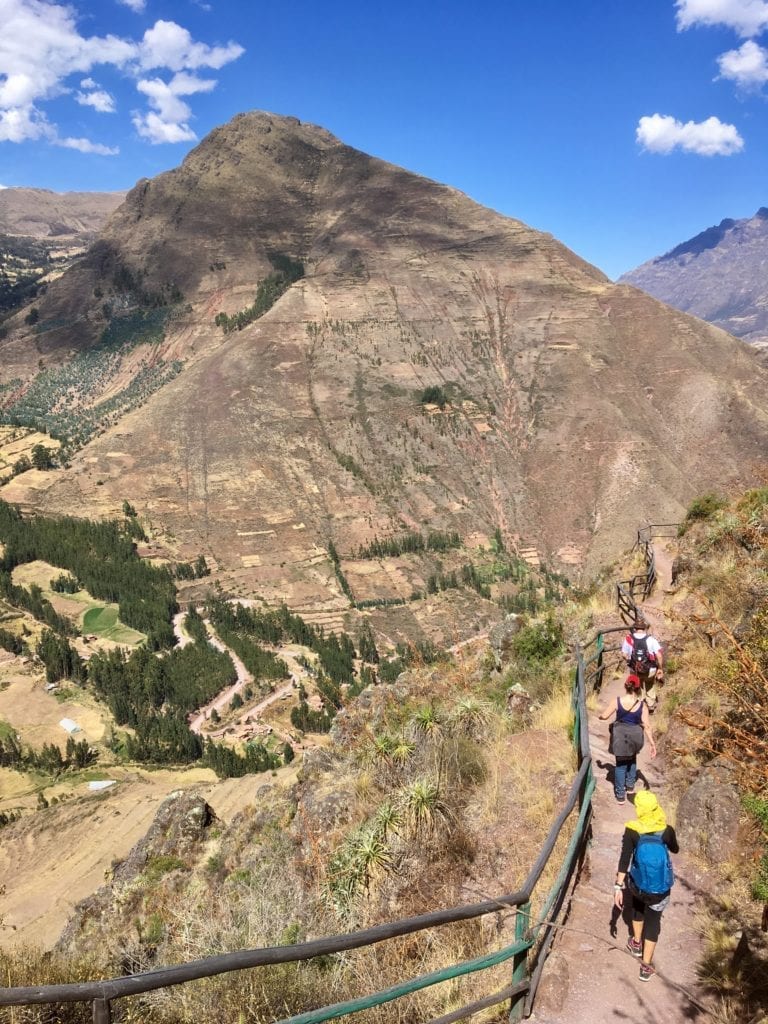
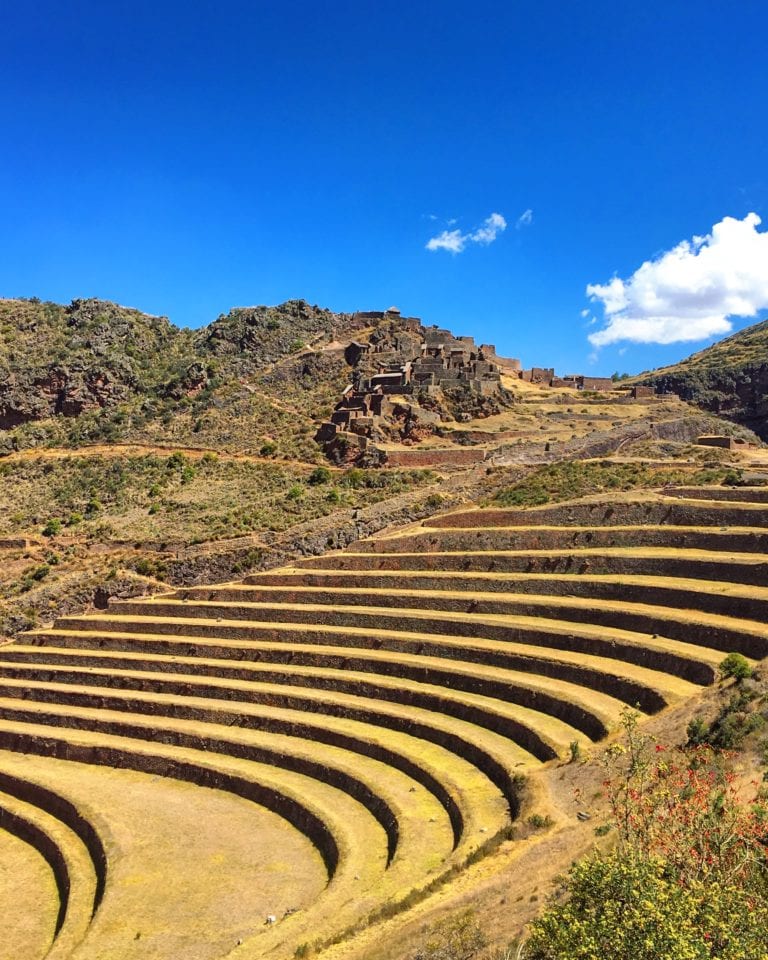
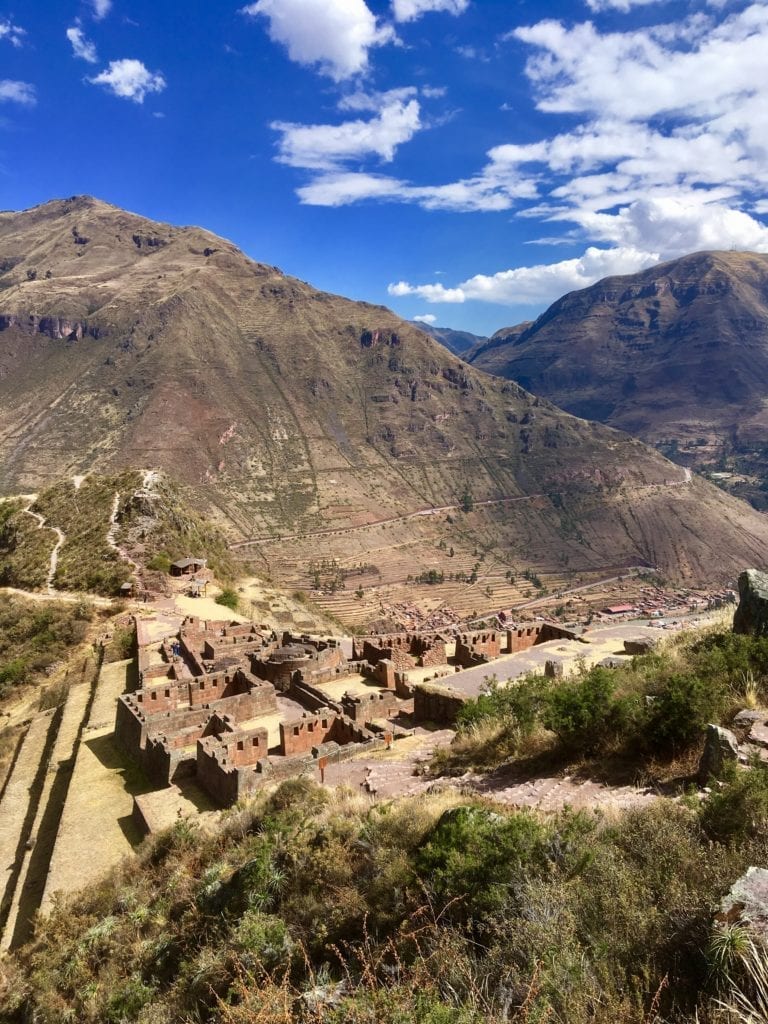
Pisac
In the early morning, we took a “colectivo” (local minivan) going to Pisac (~45min).
*Fun fact : depending on your destination, the colectivos will depart from a different street. For example, all those going to Pisac leave from Puputi street. Go there and 10 people will yell “PISAC” at you. Of course, bargain. 4S is a good price.*
Arrived in Pisac, we headed to the Plaza de Armas to enjoy the huge market that overflows in the surrounding streets. The products are pretty much the same that you can find in Cusco. Maybe our expert negotiating skills were off that day, but we found it more expensive than in Cusco.
For a change, Pisac ruins are uphill. You can either take a cab to climb the road (but you’re still not lazy, are you? Prices are fixed here) or walk something like 2 hours up. We took a cab.
From the entrance (warning: boleto turistico still needed), you climb throught all the ruins to a mirador that gives spectacular panoramic view over the valley. Again, if you are interested into the historic anecdotes, download an offline guide prior your visit. Or stand close enough to any group tour running around so you can hear the guide but still go at your own pace.
From the mirador begins (in our opinion) the best part of the visit : hiking our way down back to Pisac village (~1h30). The view is outstanding all the way, and you pass throught other parts of ruins that the guided tours don’t even mention.
Back into town, we took a colectivo back to Cusco.
ChocoMuseo
Perivian cuisine is said to be the best in South America. Well, we had to try it by ourselves. And we were not disappointed.
After a visit of the local market to buy the ingredients (plus a history lesson about the buildings on the way), we cooked a 3 courses meal and learned to make a Pisco Sour, THE Peruvian cocktail. Being in small group, the Chef was really accessible and answered any question we had, while making sure we weren’t screwing up the recipe.
Conclusion : we highly recommend this place. Book online.
Bonus : try out the hot chocolates at their bar, you won’t regret it


Day 3:
A trip in Cusco wouldn’t be a trip in Cusco without climbing la “Montaña de 7 colores” (Rainbow mountain). Beware, it is exhausting. But totally worth it.
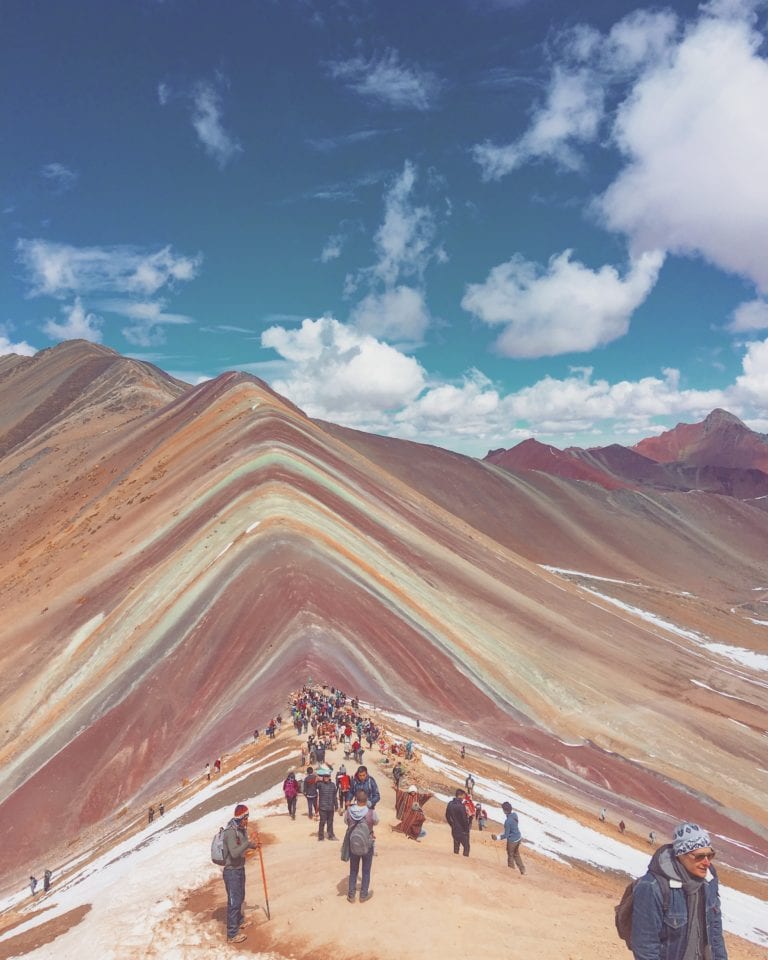
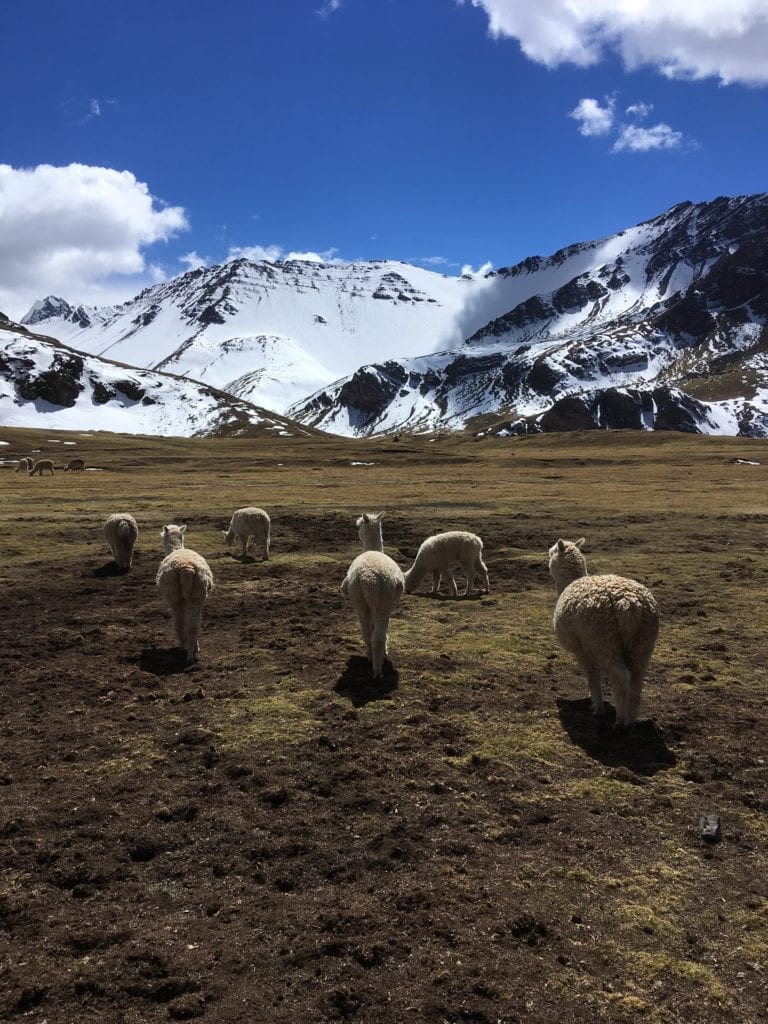
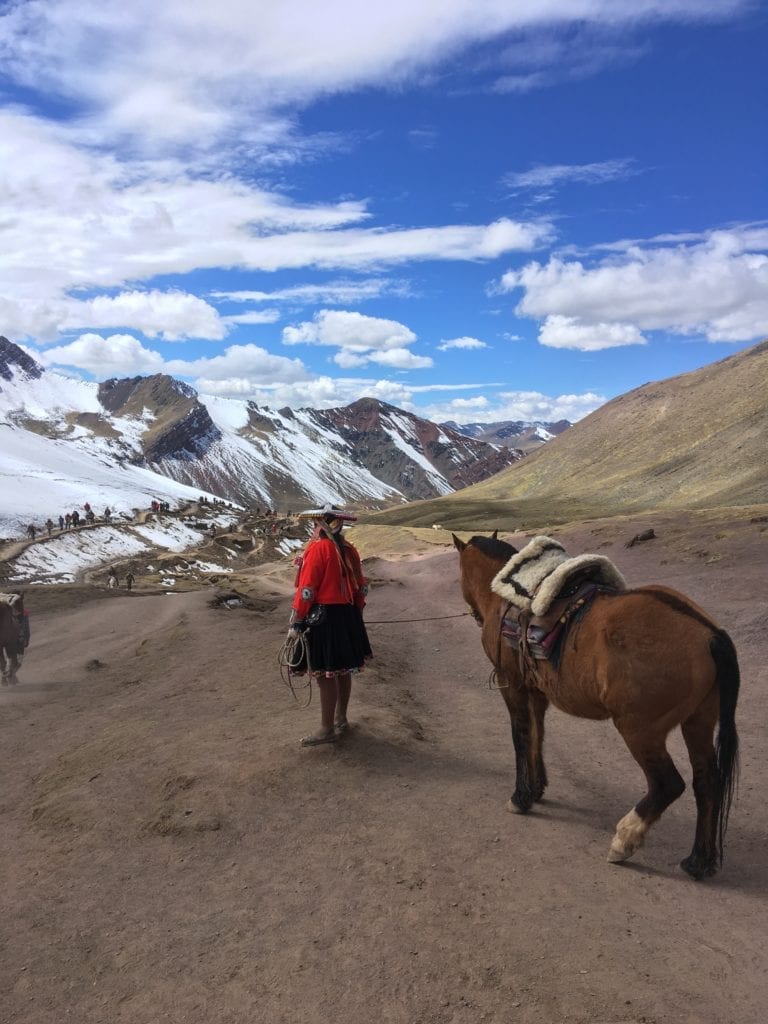
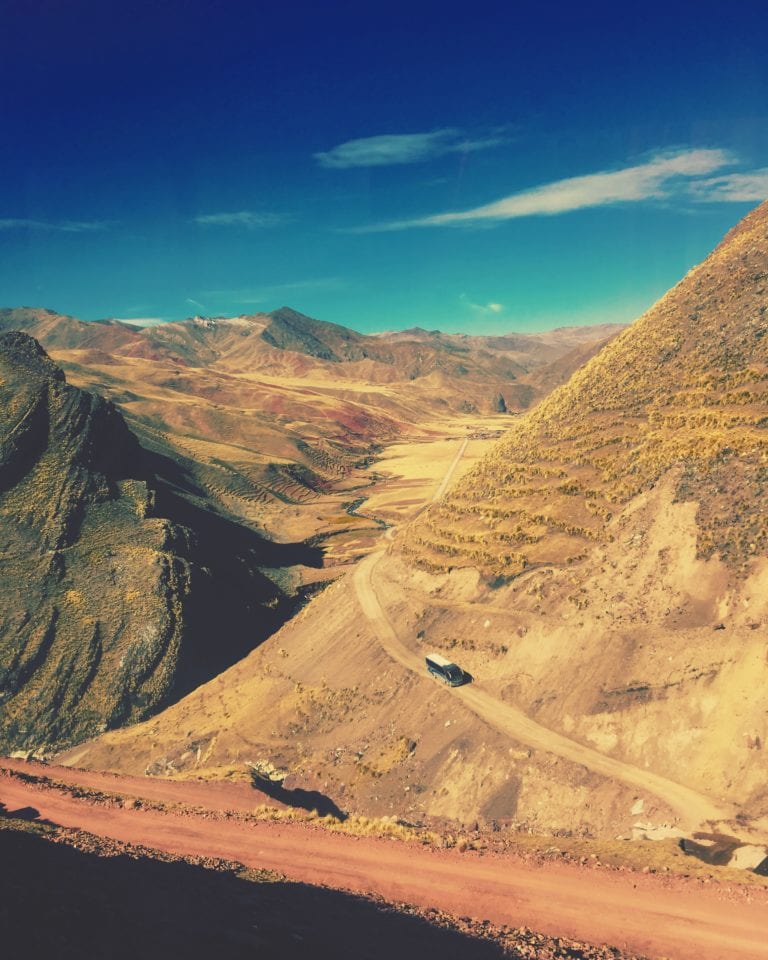
Rainbow Mountain
After 2 days of old bricks, we decided that it was time to climb over 5000m high. We booked the cheapest tour we could find (55 soles) in town.
*Note: From the little benchmark we did, we can tell you that : all tours, from 55s to 90$, include the same*
A guide came pick us up at 4am and brought us to the bus. From there, 3 hours drive to finish the night / enjoy the sunrise. Arriving in Pitumarca, we had a correct but cold breakfast (they apparently don’t build walls around restaurants over there). Followed an extra hour drive on a dirt road on the edge of a cliff. Those landscapes only were worth the road.
Arrived at the start of the trek (basically a parking lot with a couple of millions buses and minivans), the guide rushed us out of the bus and told us that we would meet 2h later at the top. 2h30 later, we met at the top, lacking oxygen & strenght. But THAT VIEW. Incredible. We could stay 15min there before the guide yelled at us to go back down. We anyway would have lost a couple fingers 10 min later. It’s cold up there.
Tip : If the hike is too hard, at any moment you can hire the services of a horse to take you (almost) to the top (~70s) and back down. Also, all the guides have a little bottle of a mix of herbs and alcohol that you smell to help you fight “soroche” (altitude sickness). We don’t know if it really works, but it smelled good.
The way down was really, really hard. Last couple of km were walked on the knees. We then headed back to the wall-less restaurant for a mediocre buffet lunch where all the exhausted group looked like a bunch of bodies without souls. Back to sleep for the last 3 hours of bus.
*Note: the bus left us out of centro historico of Cusco, because buses can’t enter at night time. Maybe if you have a more expensive tour (in a minivan) you can get a pass to the center and spare you an unexpected last couple of kilometres*
Day 4:
When we booked the tour for the Rainbow mountain, we did as well book a tour for Humantay lake the next day. Because what is better than a hard hike to relief sore legs from a hardcore hike ? Still, it was cool !
Humantay Lake
Pretty much the same logistics as the Rainbow mountain tour : early wake up, 3h of bus, a breakfast in the cold (although the restaurant of the day had 3 walls out of 4, getting better!), plus another hour driving to get to the parking lot.
Followed an easy hike (compared to the day before) up to 4200m to see the crystal clear laguna. Back to the bus, back to the restaurant for a good lunch, back to Cusco around 8pm (outside of Cusco’s center, because buses can’t enter at night, remember?)
*Note : we paid 65 soles for that tour, the cheapest price we could find*
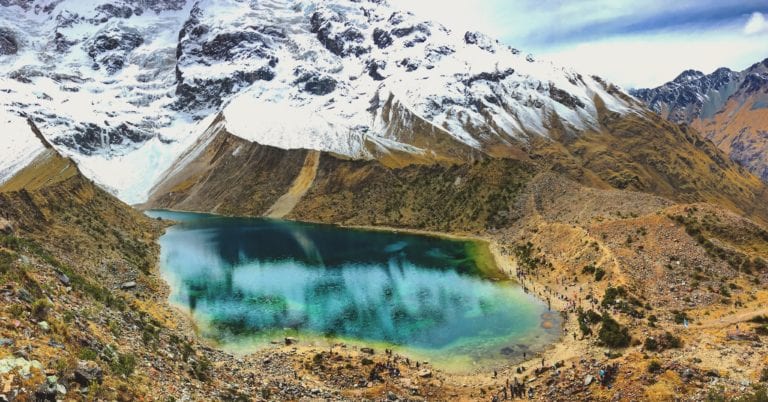
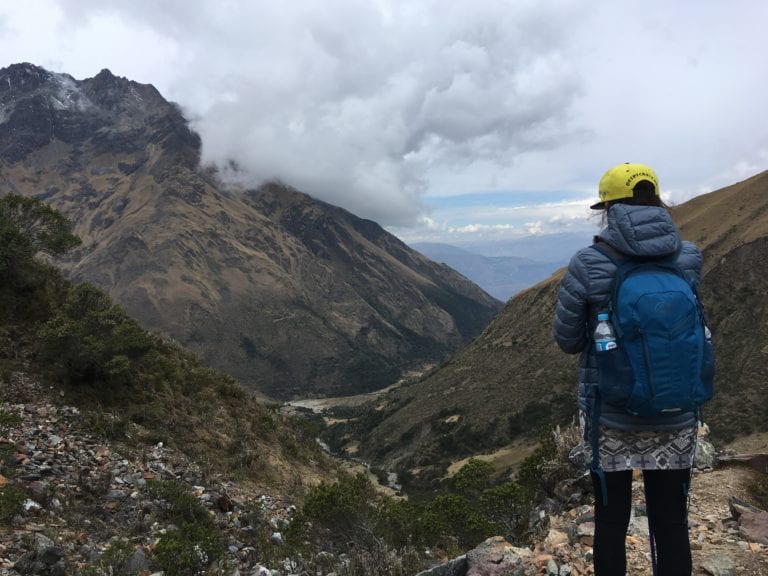
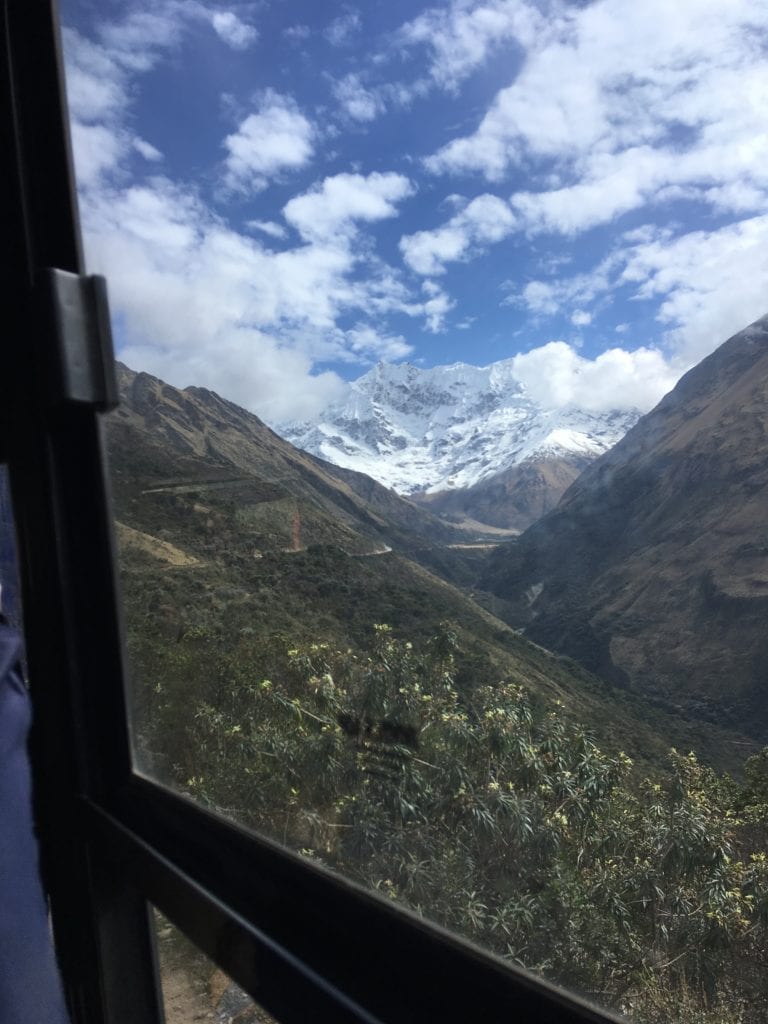
Day 5:
A little bit of rest, a little bit of bargaining, a little bit of transportation to Ollantaytambo, our next stop in the Sacred Valley. We went there with a collectivo for 12 soles (can go down to 10). Peruvian style, we had to wait that the minivan was full to leave. Don’t fall asleep, the road offers beautiful views!
Shopping
We spent our last morning in Cusco buying the last souvenirs before leaving for Ollantaytambo. Nothing special here, just bear in mind that in any market, the opening price of anything will always be at least 30% of what it’s really worth. And that a good way to get a low final price is not to look too interested in the product. Don’t be afraid to walk away, you’ll probably find the same thing the shop next door.
Day 6:
Visit of Ollantaytambo’s ruins on both sides of the village during the day, Peruvian wine tasting at night (it was okay)
Unofficial Ruins
Following the advice of Andy, our (excellent) hotel manager of “Ollantaytampu Hostel” (probably the best breakfast in town) (probably the only one we tried as well), we started off the day climbing the “unofficial” archeological site of Ollantaytambo. Located symmetrically opposed to the official one, the access is free. Climbing in the morning, the light is great to take pictures of the valley.
It took us 2 to 3 hours to do it all, taking an insane number of pictures.
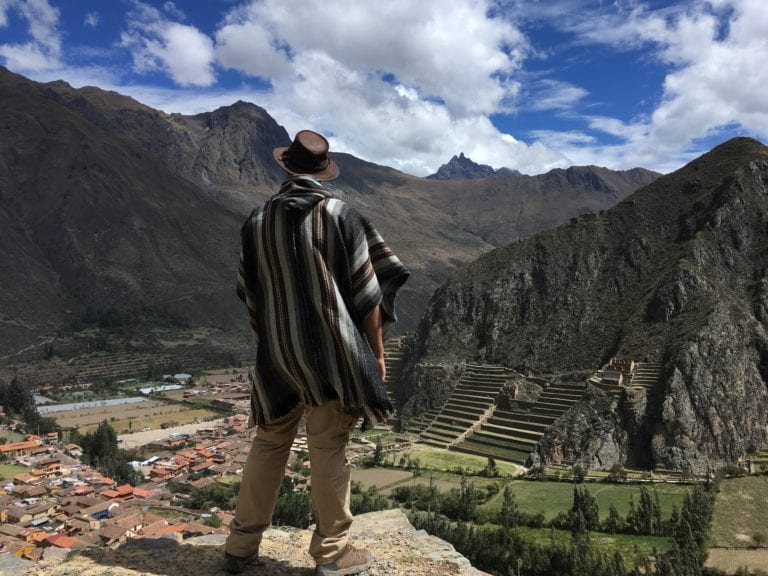
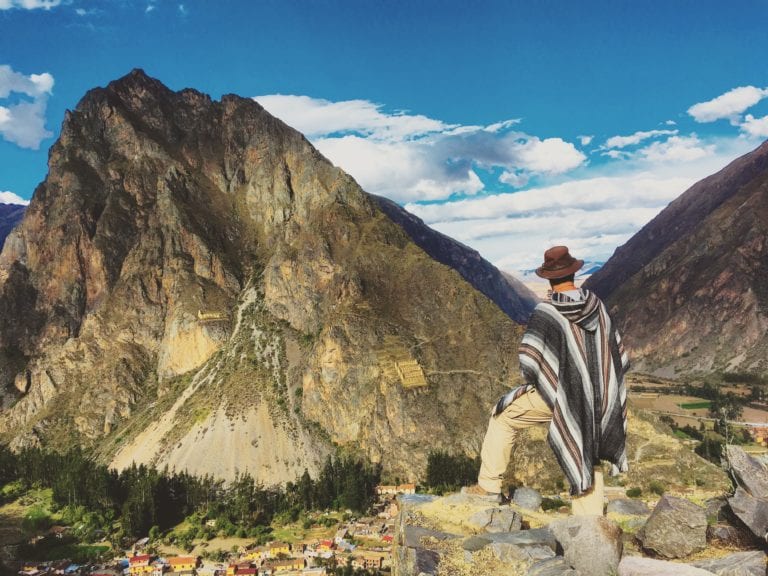
Official Ruins
Armed with our Boleto turistico, we entered Ollantaytambo’s ruins around 2pm. Bad luck, it was pretty much at that time than all the day tours from Cuzco arrived as well. If sleeping in Ollantaytambo, try to get there earlier in order to avoid most of the crowd.
The site is greatly conserved and the visit takes a couple of hours. Again, written information are lacking. Bring an offline guide or pay one on the spot if you need extra explanations.
*Note : the highest point of the site is only accessible until 4pm, be sure to start the climb before if you want to enjoy the best views around*
Day 7:
Morning visit of Inca’s laboratory of Moray, lunch on the main plaza in Maras, then easy hike to the famous Salineras of Maras
Moray
*Boleto turistico still needed*
From Ollantaytambo, we took a collectivo to Urubamba, a bus for a couple more kilometres, then a private cab to take us to Moray’s archeological site and get us back to Maras. Most people getting there with a tour, it was quite hard arriving there by our own. Taking a private cab straight from Ollantaytambo would probably have been way easier and not that much expensive. But the insistant cab drivers is pretty much what drove us away from that option.
The site itself is interesting and the visit doesn’t take much more than 1 hour. And guess what ? Nothing there is written, if you want to make those ancient rocks talk, opt for a guide!



Inca Salt Mines
After our cheapest and less interesting lunch of all times on Maras’ main plaza, we started the 1-hour hike towards las Salineras, an impressive salt farm, sourced from a salty river shared into thousands of salt pools.
The entry costs 10 soles.
It is also possible to reach it by the road, but we really enjoyed the walk downhill and think that it would be a shame to miss it. After the salineras, we kept on the same track until reaching the main road. From there, it was easy to hail a car to bring us back to Ollantaytambo for a fair price.
Tips and Tricks:
We often chose to do as much as we can on our own rather than with a tour. That is obviously for budget reasons, but also because we often felt rushed by the guides when on a tour. However, the archeological sites in the Sacred Valley all lack written information, making it complicated for independent travellers to understand. Download offline guides before going!
